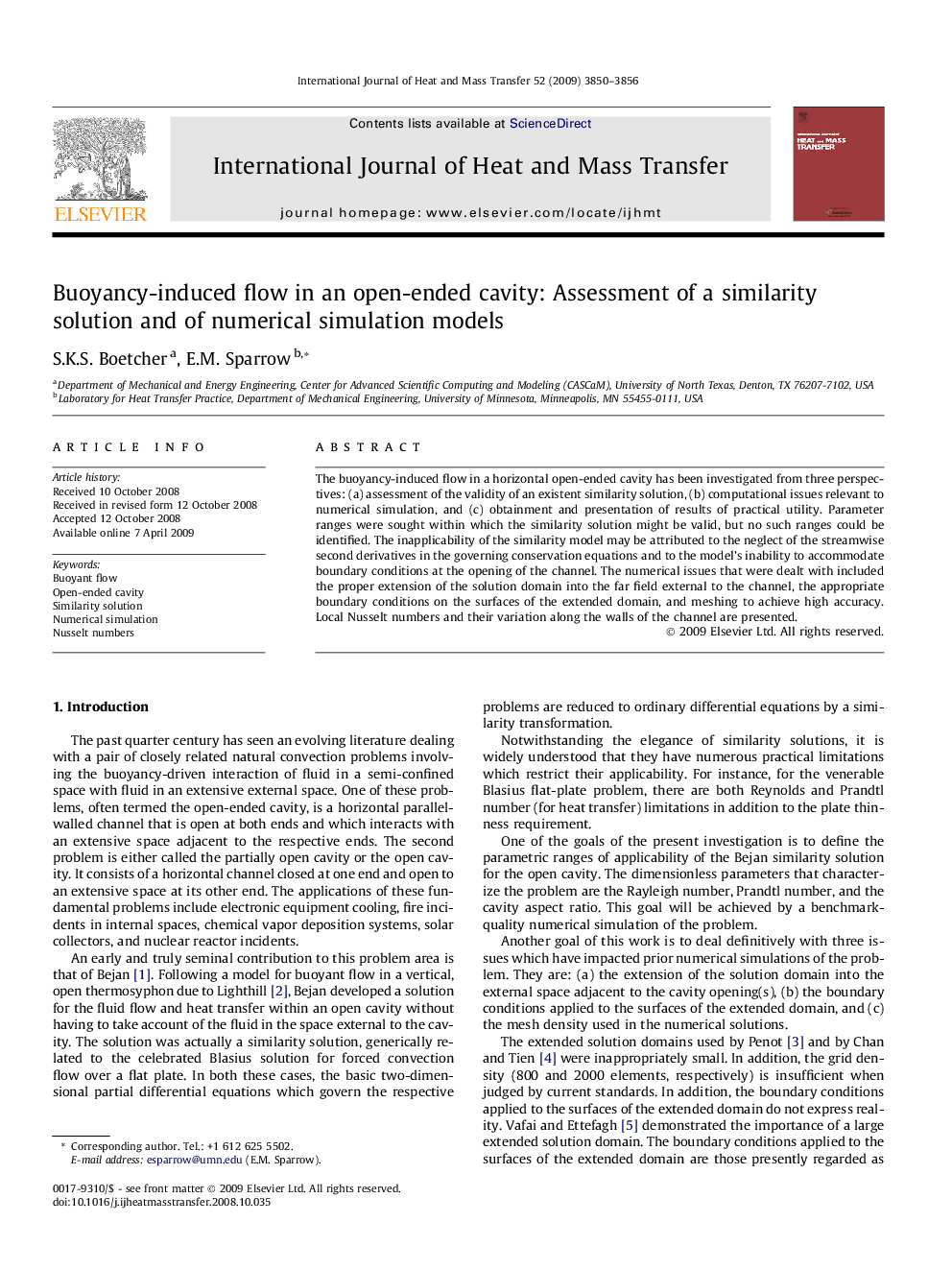| Article ID | Journal | Published Year | Pages | File Type |
|---|---|---|---|---|
| 659670 | International Journal of Heat and Mass Transfer | 2009 | 7 Pages |
The buoyancy-induced flow in a horizontal open-ended cavity has been investigated from three perspectives: (a) assessment of the validity of an existent similarity solution, (b) computational issues relevant to numerical simulation, and (c) obtainment and presentation of results of practical utility. Parameter ranges were sought within which the similarity solution might be valid, but no such ranges could be identified. The inapplicability of the similarity model may be attributed to the neglect of the streamwise second derivatives in the governing conservation equations and to the model’s inability to accommodate boundary conditions at the opening of the channel. The numerical issues that were dealt with included the proper extension of the solution domain into the far field external to the channel, the appropriate boundary conditions on the surfaces of the extended domain, and meshing to achieve high accuracy. Local Nusselt numbers and their variation along the walls of the channel are presented.
